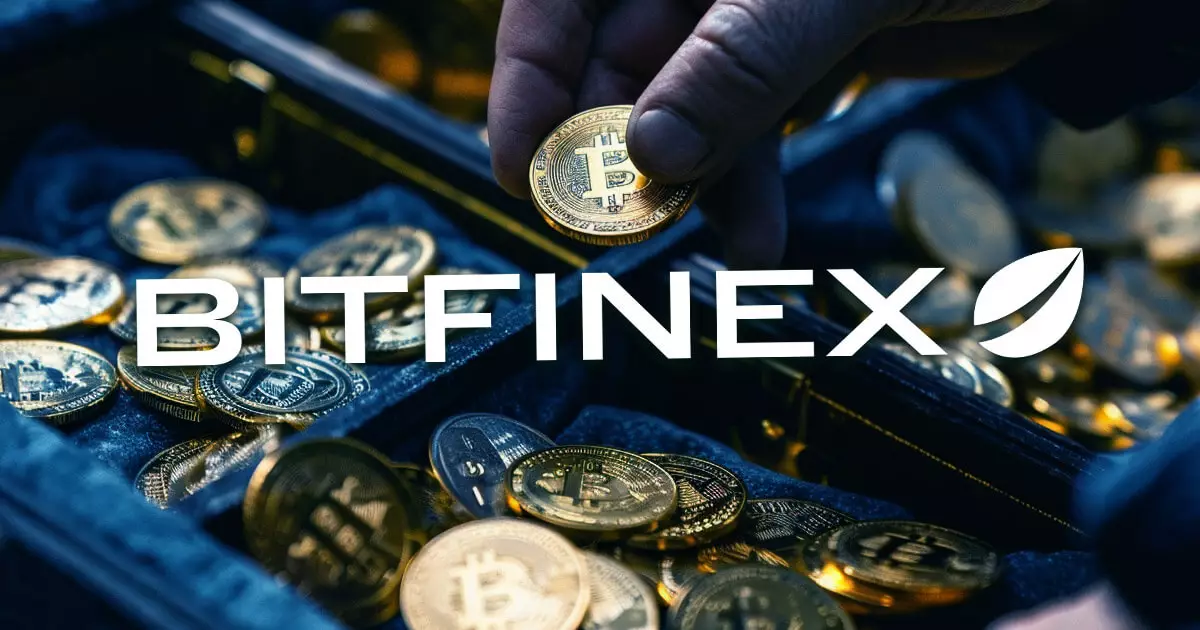In recent developments concerning the notorious 2016 Bitfinex hack, a new filing by the U.S. government has shed light on the dynamics of restitution related to the theft of approximately 120,000 BTC. The findings suggest that Bitfinex itself may be the only entity eligible for restitution, positioning itself as the primary victim of this unprecedented cyber event. As a consequence of this information, the price of Bitfinex’s LEO token surged by 14%, reflecting speculation and optimism among investors regarding the implications for the exchange.
The significance of the 2016 hack cannot be understated, as it remains one of the most substantial breaches within the cryptocurrency sector. Bitfinex had to make swift, difficult decisions to mitigate the fallout from the theft. Consequently, in an attempt to share the burden of losses, the exchange reduced all customer account balances by 36%. This communal approach triggered extensive discussions within the cryptocurrency community, weighing the ethicality of burden-sharing in such a crisis.
To address the immediate need for compensation, Bitfinex issued BFX tokens to its users. These tokens allowed customers to participate in the recovery process, either through selling, redeeming, or converting them into shares of Bitfinex’s parent company, iFinex. Remarkably, by April 2017, users had redeemed all BFX tokens, showcasing the effectiveness of the exchange’s short-term compensation strategy despite early skepticism.
The latest U.S. government filing posits that no other individual qualifies as a victim under the Crime Victims’ Rights Act (CVRA) or the Mandatory Victims Restitution Act (MVRA)—apart from Bitfinex. This conclusion marks a pivotal shift in restitution discussions, directing efforts towards the exchange rather than individual account holders. By acknowledging that Bitfinex sustained direct financial losses, the legal framework surrounding the restitution process seems set to accelerate.
To concretize its recovery strategies, Bitfinex has made significant strides in cooperating with law enforcement agencies. Notably, in February 2022, U.S. authorities seized 94,643 BTC connected to the 2016 hack, a sum then valued at approximately $3.6 billion. Currently, the value of these funds stands at an astonishing $5.8 billion. Such updates not only bolster Bitfinex’s financial standing but also amplify the anticipation of recovering stolen assets, which could lead to fulfilling its obligations towards token holders.
Bitfinex has acknowledged its contractual responsibilities to holders of Recovery Right Tokens (RRTs), which were introduced in the aftermath of the security breach. In July 2023, the exchange indicated that its recovered assets would serve primarily to redeem these tokens, with guarantees of USD 1 for each. However, with 30 million RRTs in circulation, the funds currently recovered are insufficient for full redemption.
This scenario raises critical discussions about how Bitfinex plans to allocate any additional recovered assets. Once the fulfillment of RRT redemptions occurs, it intends to distribute up to 80% of remaining assets to holders of UNUS SED LEO tokens. While LEO holders might not directly tap into recovered Bitcoin, they stand to benefit from the unresolved implications of a potential token burn mechanism alongside a potential uptick in value as Bitfinex undertakes recovery operations.
Market reactions to the ongoing developments have exhibited caution. Following the release of the government documents, Bitcoin prices dipped by 0.7%. This decline can be attributed to trader apprehension over the possibility of large volumes of Bitcoin flooding back into circulation. A flood of Bitcoin from recovered funds has the potential to destabilize prices, thus creating palpable uncertainty within the market.
As the proceedings unfold, Bitfinex’s actions will be under intense scrutiny. The exchange’s past decisions—the controversial share of losses and the innovative issuance of BFX tokens—demonstrate its resilience and adaptive strategies in challenging circumstances. Nevertheless, the complexities of legal disputes and potential claims from different parties may still pose hurdles.
Bitfinex’s journey from the aftermath of the 2016 hack serves as a case study in crisis management within the cryptocurrency landscape. As the sole recognized victim entitled to restitution, focus has returned to the exchange and its strategies in leveraging recovered assets while maintaining smooth operations. While trust amongst users may have been shaken, Bitfinex’s systematic responses and ongoing collaborations with law enforcement suggest a pathway towards restoring both financial integrity and user confidence. The evolving situation remains critical not only for Bitfinex but also for the broader crypto ecosystem, emphasizing the necessity for robust security measures and transparent operations to safeguard user interests in future.

